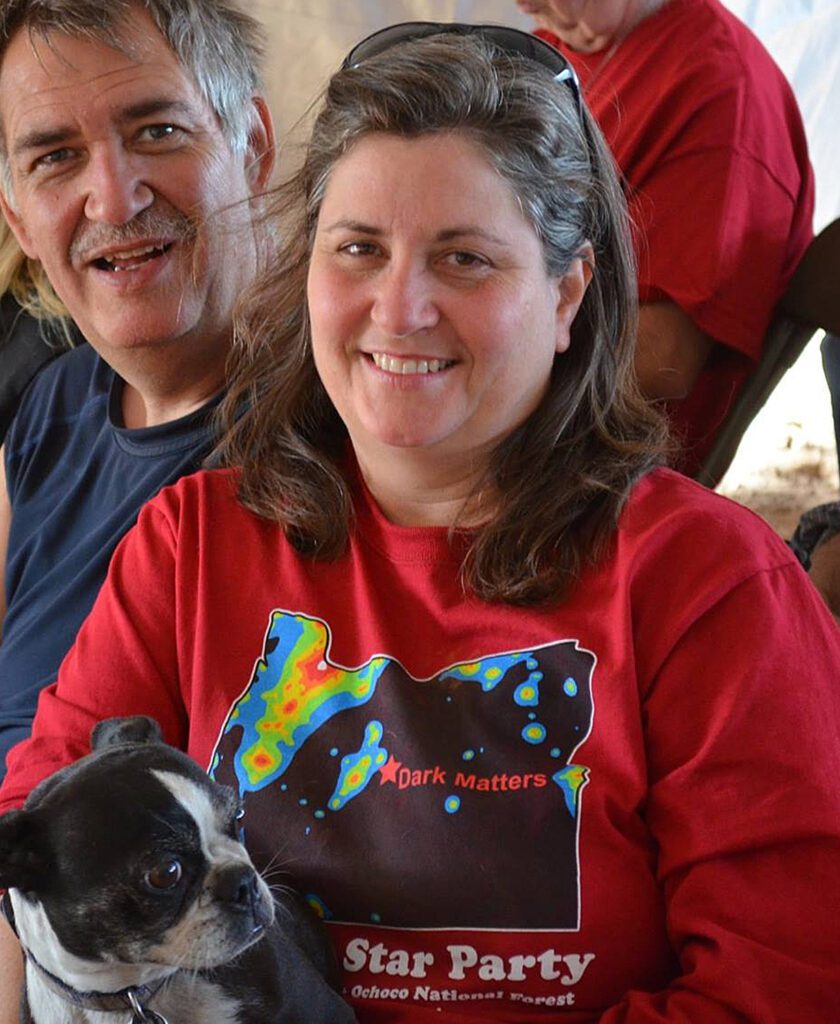Speakers
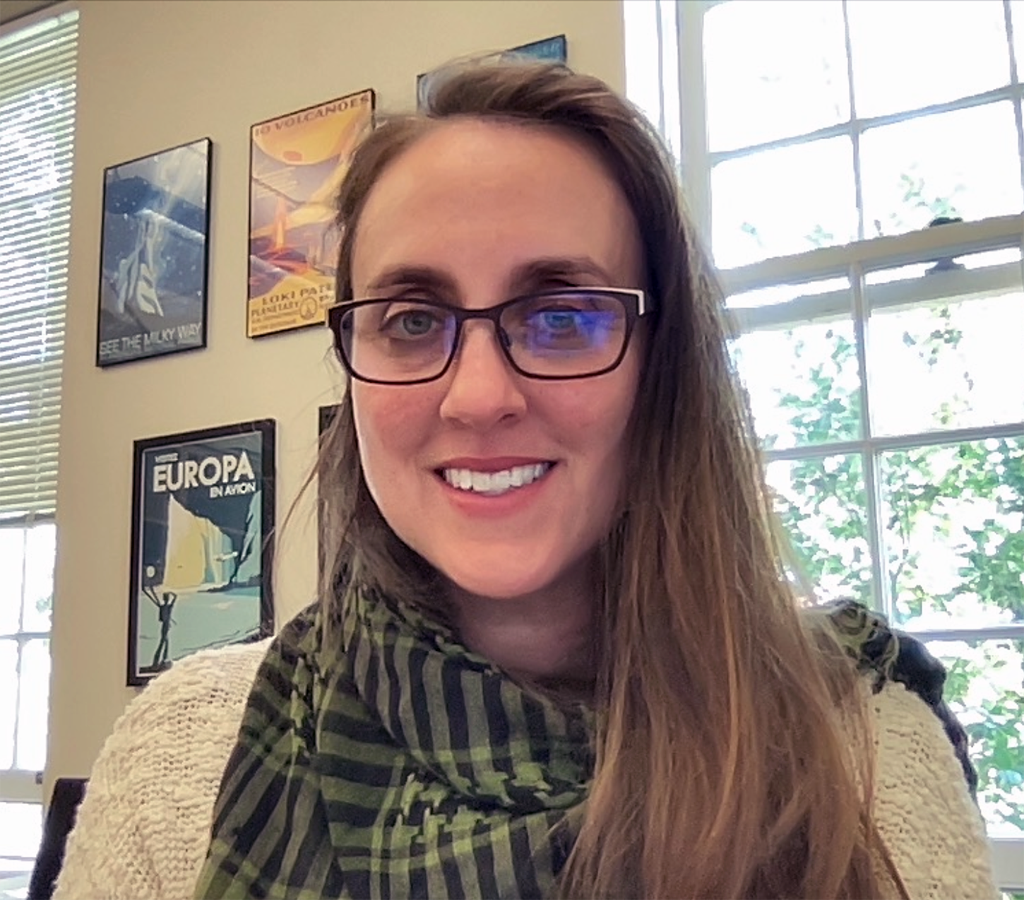
Dr. Carol Paty
Europa Clipper: The Road to Launch.
Dr. Paty will be talking about her involvement on the Europa Clipper mission. She is a co-investigator.
Dr. Carol Paty is a planetary and space physicist specializing in studying moon-magnetosphere interactions and icy moon interiors with simulations and spacecraft observations. She is a co-investigator on NASA’s Europa Clipper mission and actively developing new mission strategies to explore the Neptune-Triton system as part of the Trident mission team. She currently sits on the steering committee of the Outer Planets Assessment Group and is also serving on a National Academies panel for the Planetary Science and Astrobiology Decadal Survey. She has an appointment in the Clark Honors College where she worked on the recent curriculum revision and implementation, and her research home is in the Earth Sciences department of the University of Oregon where she teaches and mentors students in planetary science.
Prior to arriving at the University of Oregon, she spent 10 years at the Georgia Institute of Technology in the Department of Earth and Atmospheric Sciences developing a planetary sciences focus and the Center for Space Technology and Research which bridged space research interests between the College of Science and College of Engineering. Her post-doctorate was spent working with the Cassini Plasma Spectrometer team while at the Southwest Research Institute.
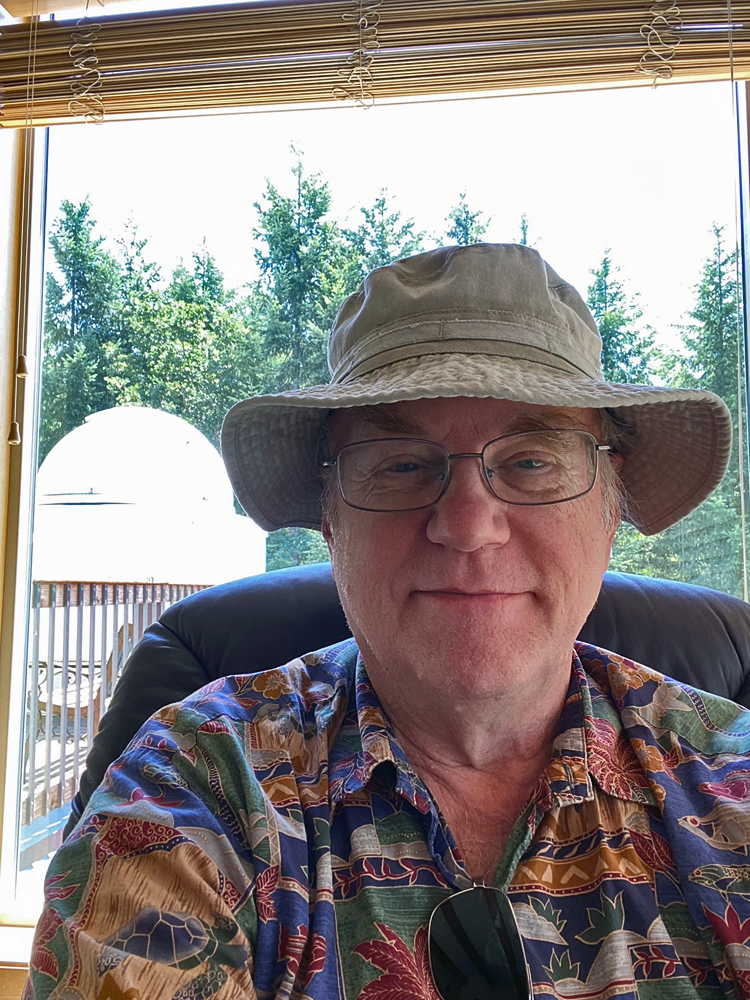
Jon Brewster
Basic Astrophotography
How do we capture the universe? We’ll discuss equipment and
processing steps with a focus on basic techniques, with some advanced topics sprinkled in.
BIO: Jon Brewster is an avid astronomer and astrophotographer. He has photographed new stars being born, old stars blowing up, clusters of galaxies and more local things like comets and eclipses. He is retired from HP where he was a Technology Fellow. He also spent a couple years in Hawaii working at Mauna Kea Observatories (astron my at 14,000 ft) where astrophotography is serious business. His first OSP was 1997. And if his other hobby is a bit odd (refurbishing steam locomotives), it’s still about “how things work” and getting it right, very right. At least our telescopes don’t usually explode if we get something wrong.
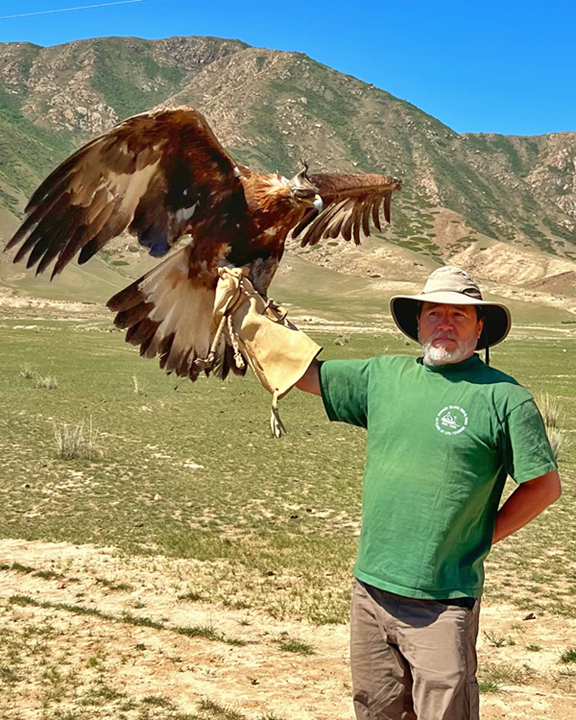
Mike Shipman
Why Collect Visual or Imaging Data??
Or, The Utility and Process of Data Collection for Astrophotographers and Visual Astronomers
Mike will provide an educational overview of useful astronomical data to collect, why, and how, and the pros and cons of analog versus digital log books.
Mike Shipman is a full time photographer, artist, author, and former wildlife biologist. He ordered his first telescope in December, 2020 planning to photograph the Saturn/Jupiter conjunction later that month. He received his order that May and has been battling the clouds ever since. His photographs have been published in magazines around the world and he is the author of The Astrophotographer’s Log Book, The Visual Astronomer’s Log Book, The Exposure Equation: A Practical Method of Understanding Exposure, The Ecology of Photography: Senses and Perception, and Big Toe Joe: The Legend of Canary Row; all are handmade in his home studio (except Ecology available through Amazon). He teaches photography and leads workshops worldwide through his business, Blue Planet Photography.
You can see his work at:
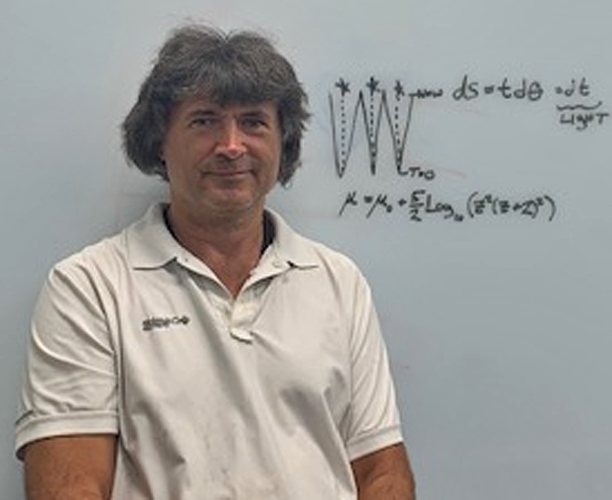
Seth Jelen
Exploring Cosmology Assumptions
Seth is a graduate of California Institute of Technology (Caltech) and of Stanford. Astronomy enthusiast since childhood. Studied cosmology for over 40 years. Attended OSP for many years.
Over many years assumptions about cosmology have been taken as facts. This presentation will offer new insights (nothing crazy) about several assumptions culminating in showing you how you too can derive the Hubble curve including relativistic effects for the Standard Cosmology Model using high school math. No Einstein field equations or Riemann geometry required. The curve exactly matches the computed curve of Supernovae 1A luminosity-redshift published in the 1998 work for which Perlmutter, Riess, and Schmidt shared the 2011 Nobel prize.
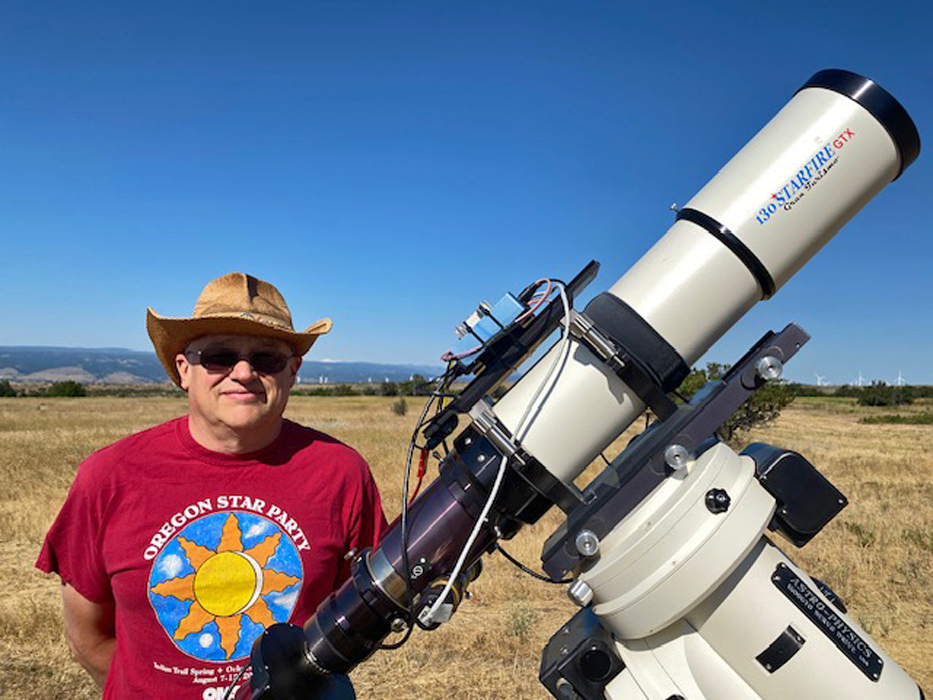
Wade Hilmo
Preventing Light Leaks in the Age of Technology
The advent of technology has many of us using computers, tablets and smart phones at the telescope. In a star party environment, the light from these screens can affect not only your dark adaptation, but your neighbors’ as well. Learn some simple steps to help control light emissions from the myriad devices that we use at our telescopes, so that we can all make the most of OSP’s dark skies.
Wade is a retired software engineer and has been involved in amateur astronomy for more than 25 years and has been at every OSP since 2001. He enjoys visual observing, but is primarily an astrophotographer. He also enjoys giving back to the amateur astronomy community and serves on the OSP committee, as a moderator on Cloudy Nights, and enjoys helping others with either visual or imaging problems while his fully automated system works in the background.
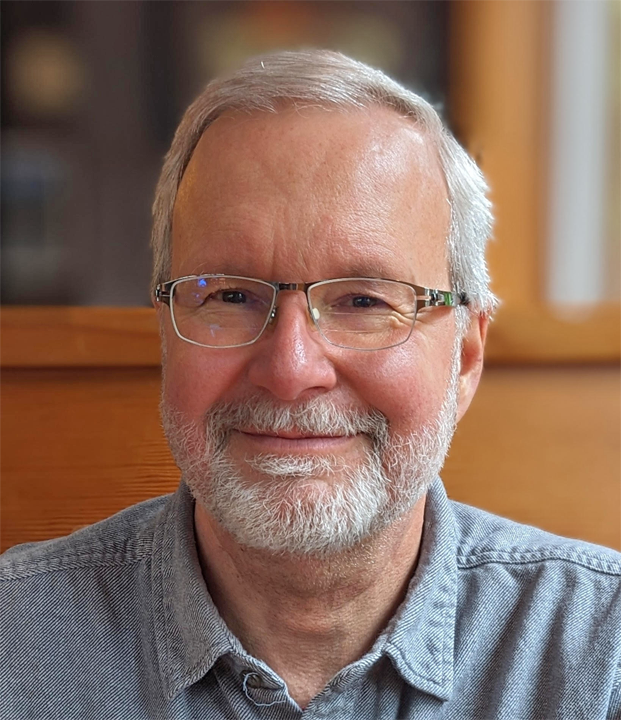
Dave Sandage
An Introduction to Automated & Unattended Imaging
Dave will explore the wide range of automated and unattended imagine from a simple intervalometer and a DSLR camera to remote imaging from a distant site and everything in between. He’ll look at the equipment and software you’ll need to get started and talk about some best practices for successful imaging.
You can see some of his recent CCD (images) here:
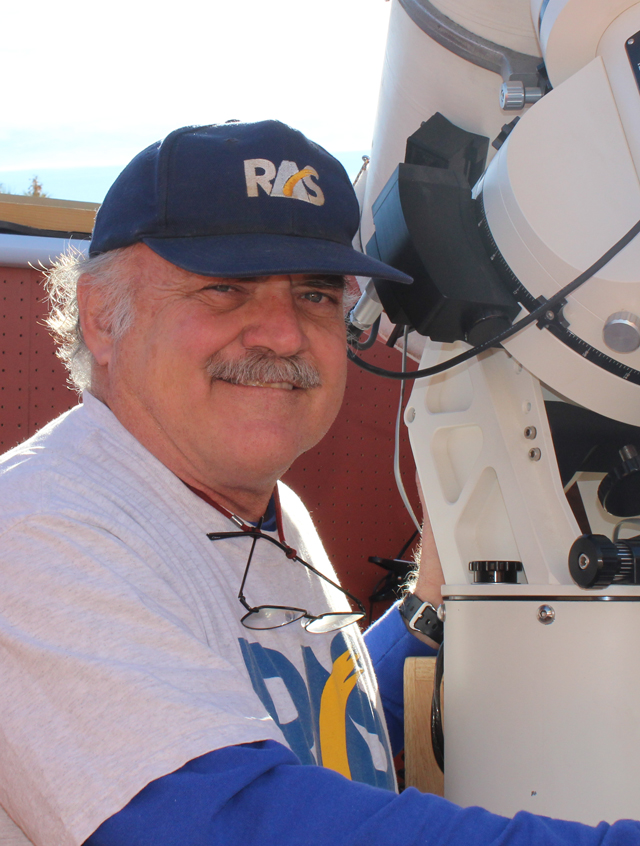
Alex McConahay
Through Rose Colored Glasses (Filters)
HOW we look at things has a lot to do with WHAT we see. “Through Rose Colored Glasses” explores the science behind using different filters to look at various celestial objects. What is it about human vision, the characteristics of different elements, light pollution, and magical coatings that unlocks so much of the wonders we see in our telescopes?
Bio: Alex was a high school teacher (mostly English) and school administrator (Principal and Director of Student Services) in several school districts in Southern California. Retired, he now lives in Moreno Valley, California. His main non-astronomical interest is traveling.
In 1995, he made a special trip up to Mojave Narrows to see Comet Hayakutake. There he found a bunch of people (The Riverside Astronomical Society) camping out, and enjoying the stars and each other’s company. This sounded like an ideal way to spend some time.
He started attending meetings and eventually held nearly every office in the club, including President and Chairman of the Board. He was also a volunteer and board member of RTMC. He is the director of an annual star party and imaging conference at Nightfall. And he helped establish The Astro Imaging Channel seen every Sunday night on YouTube.
Alex has presented at star parties around the country, including the Advanced Imaging Conference, Nightfall, RTMC, Texas Star Party, and Sequoia National Parks Star Fest, as well as various clubs.
He has built two telescopes and earned an RTMC Merit Award. Finally, he is a Master Observer (#191) according to the Astronomical League.
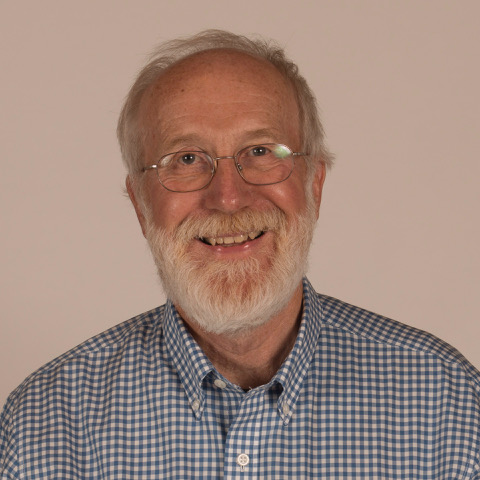
Michael McKeag
Don’t Take These Dark Night Skies for Granted
The Light Pollution Map you may all be familiar with is based on 2015 satellite data, it never changes. New maps based on annually updated satellite data tell an alarming story of light pollution expansion, and shrinkage of the remaining regions of pristine dark night skies. This threat can be addressed if we act.
Bio: Retired after 30 years as an electron microscopist in the semiconductor process development team at Intel, with interests spanning the scale range from nanometers to light-years. An amateur photographer since childhood, an amateur astronomer and RCA member since a couple of decades ago, a dark skies advocate since helping organize the 2016 Gorge Night Sky Conference, a DarkSky International delegate, and co-founder and board member of DarkSky Oregon, the Oregon chapter of DarkSky International.
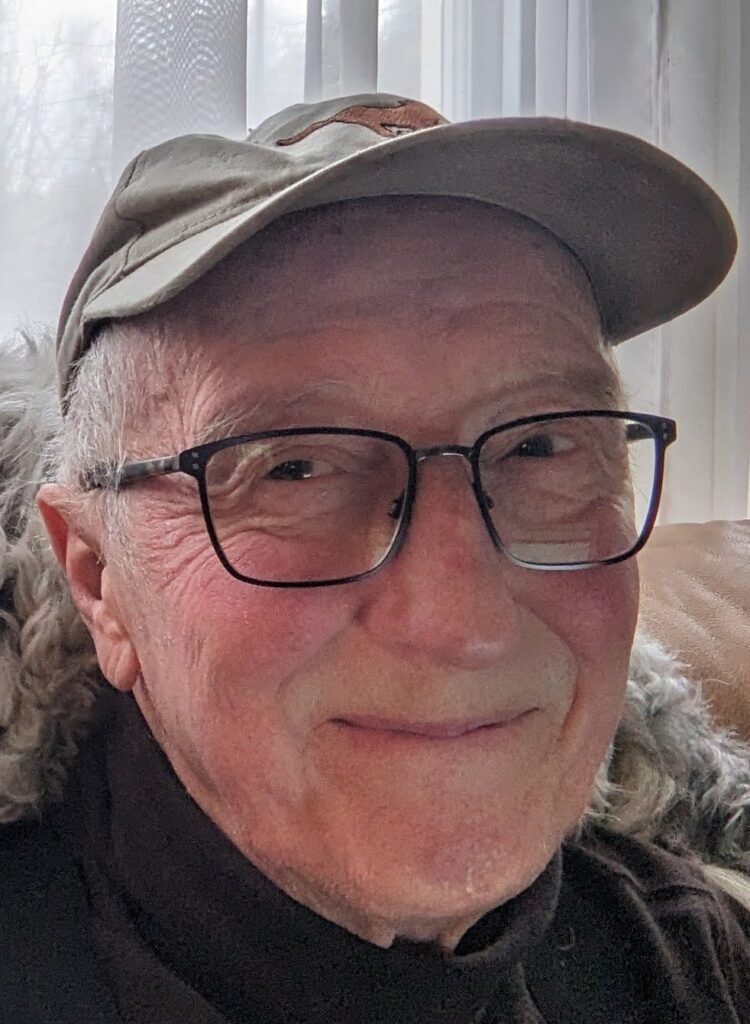
Michael Dempster
Experience Your Cosmic Flight
The Galactic Context Model is a new type of astronomy model, which is useful in both teaching basic astronomy, and for helping astronomy enthusiasts more easily visualize the flight of our piece of the Earth through the Galaxy in real time
BIO: My dad was a mechanic and loved to build things. My Scottish aunt showered me with science books when I was a kid. I’ve always loved to play with water and air, and build things. I like boating and playing guitar. I remember seeing Sputnik fly over my apartment block in New Jersey in 1957, and human’s first landing on the moon in 1969. Carl Sagan’s “Cosmos” series knocked my socks off. He said we need to cultivate a level of awe appropriate to the grandeur of our situation: conscious creatures stuck by gravity to a round rock that flies around a star, adrift in space.
That’s been a big part of my work as an elementary school science teacher in Olympia, Washington, for 30 years — cultivating awe for the beauty we’re immersed in. Curiosity about the geometry of how we’re flying through space led me to build models, which have culminated in what I think is a beautiful new type of astronomy model. It has extraordinary explanatory power. I’d love to share it with you.

Erika Plummer
The Birth of Space Weather
The story of Richard Carrington and how to maximize seeing Auroras at Lower Latitudes
How did astronomers like Richard Carrington and Richard Hodgson correlate sunspots with Auroras seen on Earth? How to interpret NOAA Space Weather data to be on alert for optimal Aurora viewing as well as tips for photographing Auroras with digital cameras.
Erika Plummer has been chasing Auroras in the Pacific NW for over 15 years with her digital cameras – finding repeated success during solar cycles 24 & 25. She considers herself an amateur Space Weather enthusiast and astrophotographer. She grew up at the base of Mount Palomar in San Diego, CA which at the time housed the world’s largest telescope – sparking a life long passion for astronomy. She is a current member of the International Dark Sky Association and spends time volunteering throughout Oregon to teach communities about the importance of star gazing and mitigating light pollution. Erika spends over 100 nights a year visiting Dark Sky sanctuaries and photographing the night sky.
You can see her work here:
Dave Kasnick –
Telescope Walkabout Host
A tradition for more than two decades, the Oregon Star Party Telescope Walkabout celebrates and promotes telescope making and innovation.
With gratitude we extend a sincere thanks to Mel Bartels for initiating and fostering this invaluable promotional event.
On behalf of two decades’ worth of OSP attendees and numerous telescope makers we express our deep appreciation.
Thank you, Mel, for your pioneering efforts!
Dave’s Biography
My fascination with astronomy started at the age of 11 during summer camp where I earned the astronomy merit badge. Ever since, the cosmos has been an integral part of my life’s journey. Throughout my teenage years, I was privileged to be a member of the Goldendale Observatory club, granting me exclusive access to the 24.5-inch domed telescope. It was amidst the company of fellow enthusiasts gathered on the hillside of Goldendale Observatory that I witnessed the 1979 total solar eclipse.
At the age of 14, I eagerly acquired my inaugural telescope, an 8-inch equatorial Newtonian, further fueling my passion for observing the night sky.
Driven by a quest for more aperture, in 2002 I began constructing a 22-inch Dobsonian telescope, based on the foundational book by Kriege and Berry “The Dobsonian Telescope”. Fast forward to 2021, and I undertook the task of redesigning and enhancing the 22-inch Dobsonian to incorporate motorized tracking.
Since 1998, I’ve been a devoted attendee of the Oregon Star Party, relishing events like the Telescope Walkabout, where I’ve marveled at the ingenuity and creativity of fellow amateur astronomers. As both an engineer and a stargazer, I take great pleasure in supporting this OSP tradition.
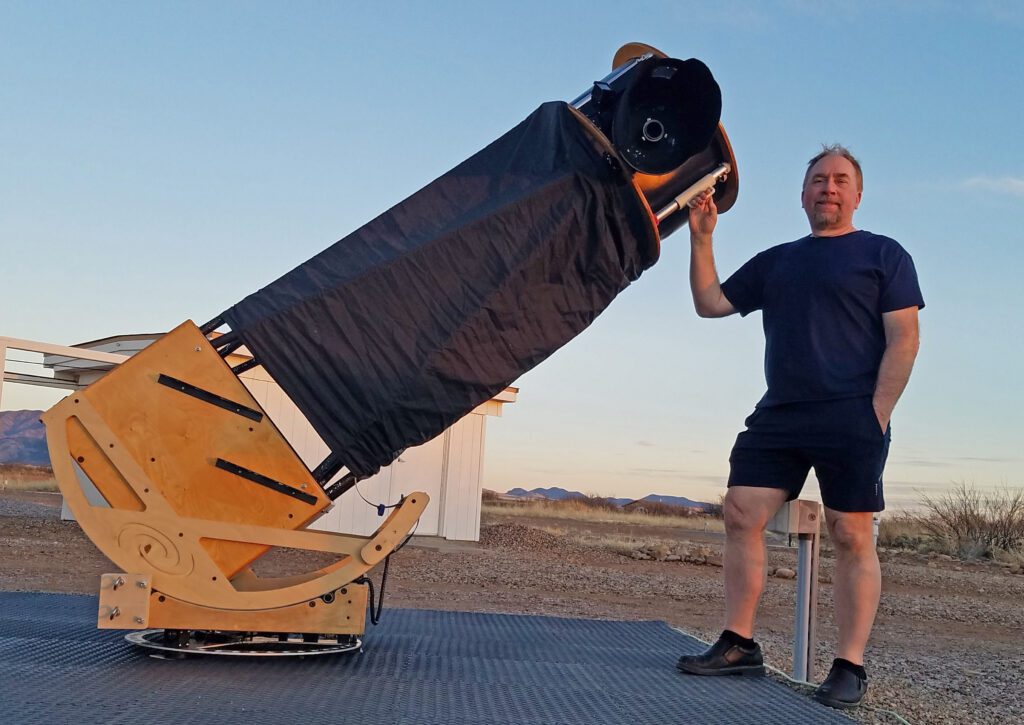
If you will be attending OSP 2024 and you believe that you have some innovations to ‘show and tell’ then send an email to:
[email protected]
The Walkabout will be in the evening of Thursday August 1, starting at 6:30 pm until 8 pm. That’s right, no more suffering in the afternoon sun at the hottest time of the day!
Brian Hatley – Observing Programs
Brian Hatley will talk about the OSP observing program to familiarize attendees with the five lists. Attendees will hear what the program is all about, how it works, and what lists might be of most interest to try. Content and highlights of each will be discussed.
Bio:
Brian’s astronomy passion began in grade school… the Apollo missions, sci-fi, and Astronomy magazines ignited his interest, and it’s never faded. His science and electronics interest drove him to earn a BS in Electrical Engineering. His career started at a small audio company, then moved to Boeing where he held many design and lead roles in audio systems design, logic & chip design, networks and communications, and large systems labs architecture, development, and operation. He recently retired but now supports Boeing as a contractor.
Brian’s astronomy hobby started with a big pair of binoculars and attending his first OSP in 2000, starting with Messiers and other brighter “faint fuzzies.” By 2005 he “graduated” to a 10” Dob with “push-to” location automation. A couple years later the automation failed (coincidentally with first hearing about observing programs) so Brian bought a detailed star atlas and started to work through a list. That was the catalyst… He’s done observing lists annually ever since – never returning to location automation (even after repair).
Over the years, he developed his skills, and at OSP earned pins for all the list types. “There’s nothing like the amazing views and beauty of objects in sky,” per Brian. The other part, he says, is the thrill of the “hunt.” “Can it be found? Can it be seen? Will a filter help? How far can I push the limits?“ Now Brian is building a bigger telescope and adding night vision to look even deeper.
After supporting list checking in 2017 (busy year… eclipse) he was offered leadership of the observing program – his answer was YES! His viewpoint is “What better way to give back for all the joy of observing than to help others experience the very same thing!”
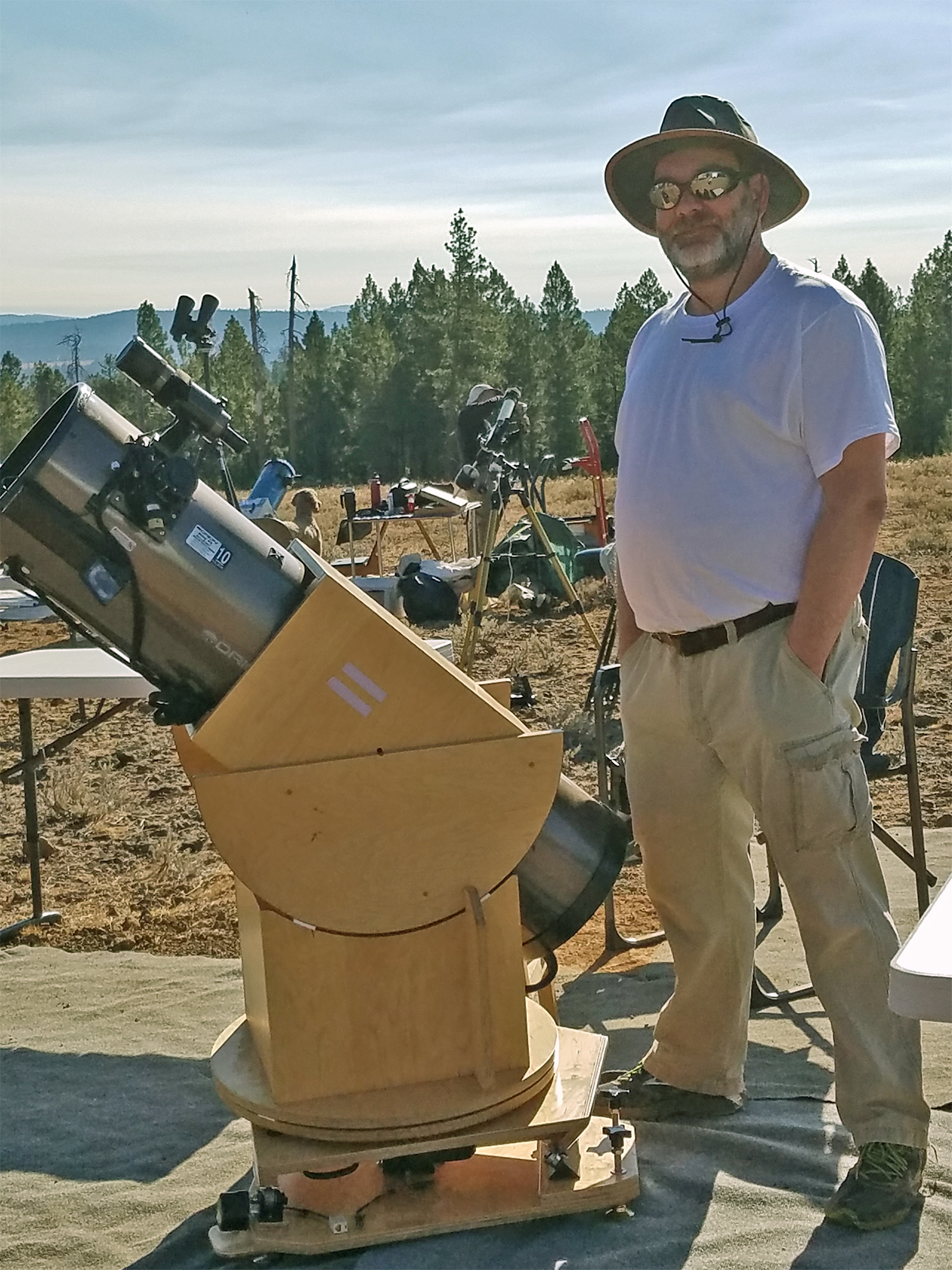
Brian Hatley
CHRIS DIX
(Co-Director) Welcome to OSP Q&A
Chris was introduced to the night sky at the age of 9 by his father when he viewed the moon thru his father’s homemade 3-inch reflector. This telescope was constructed from an Edmunds Scientific surplus mirror, a cardboard mailing tube, a microscope eyepiece, rectangular diagonal, and a focuser that slid along the axis of the OTA. At the age of 12 Chris received a 3-inch refractor for Christmas. Crunching through the fresh crust of ice that covered the snow in a Boston suburb backyard, he got his first glimpse of Saturn’s rings. Although a wee speck in the field of view – the hook was set. Later in High School the objective of the 3-inch refractor was removed and placed in a cardboard tube that was mounted to his 35mm camera (poor-mans telephoto) that was used to take photos during Friday night football games for the school newspaper. After graduating from the University of Tennessee with a BS in Engineering Physics, he joined the Smokey Mountain Astronomical Society (SMAS) that met in the Physics building on the Knoxville campus. Borrowing a 10-inch Dobsonian from the club, he started chasing Messier objects and learning the night sky. When his father retired and moved from Florida to be near the grandchildren, Chris invited him to a club Star Party. The November air was cold and steady. In an 8-inch long focal length outfitted with a Barlow and short focus eyepiece Jupiter filled the field-of-view and we all took turns watching the shadow of a transiting moon. This was a full-circle kind of event and I felt blessed to share the experience with my father.
Chris earned his MS in Material Science and then moved to Oregon in 2001 to work a Lattice Semiconductor. His first OSP was 2002 and he purchased a pair of binoculars with which he completed the Messier Binocular in 2016 (slow and steady). In addition to the 8-inch “planet killer” f10 telescope reconstruction (the inspiration to use a spreadsheet for optical design), Chris has also been grinding a 12-inch “honeycombed” f3 mirror.
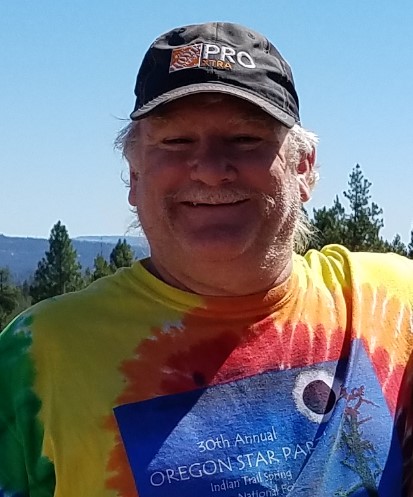
Chris Dix
MARIANNE RAMONA
(Co-Director)-Welcome to OSP Q&A
From her humble beginnings as a child whose interest in the stars started with a book, Know the Stars by H.A. Rey to a trip to Steens Mountain, alone, Marianne has developed a love of astronomy as an adult.
From the old Tasco telescope her brothers had to the Celestron C102 4 inch refractor full manual telescope on a beautiful new German Equatorial mount, she’s looking forward to taking her equipment out to Indian Trail again.
Her love of science came from being a Girl Scout, going to places like the Exploratorium in San Francisco, the Monterey Bay Aquarium and many other places she took her children to. She spent 30 plus years as a Respiratory Therapist and Pulmonary Function Technician.
She attributes her interest in stargazing based on a trip to Steens Mountain. She and a work colleague in the 1990’s had a conversation about stargazing. He told her, “If you want to stargaze somewhere amazing, go to Steens Mountain”. She made the trek, alone, with her Doberman, Sasha, to Fish Lake campground. The stars were so bright and they looked so close she felt she could reach out and touch them.
This trip to Steens Mountain Wilderness had indirectly lead her to her first Oregon Star Party in 2013.
She’s been every year since ‘touching the stars’.
